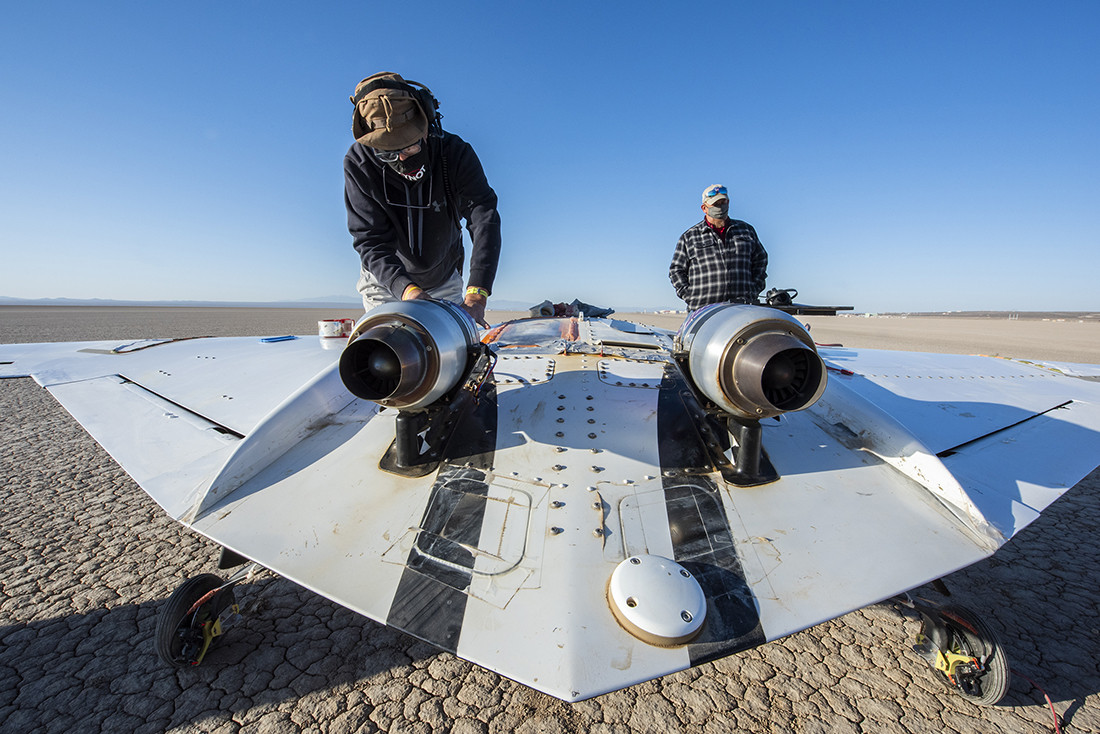NASA says that its experimental X-56B unmanned aircraft suffered what it described as an “anomaly” today. The current state of the drone, as well as whether it technically crashed, is unclear, but an additional statement that “there are no casualties,” which seems slightly cryptic when discussing a drone and could suggest a hard impact into the ground.
The incident occurred around 7:30 AM local time at NASA’s Armstrong Flight Research Center, which is collocated with the U.S. Air Force’s Edwards Air Force Base in California. The drone had just taken off when the unspecified fault emerged.
“The investigation is underway and further details will be provided when available,” an official statement from officials at Armstrong said.
NASA only recently began a new flight test series with the X-56B, in cooperation with the Air Force Research Laboratory (AFRL) and Northrop Grumman, in April. It’s unclear what the objectives of this testing were.
The X-56B, which has a blended wing body planform and is powered by two small turbojets, is a conversion of an earlier X-56A, which retains the “centerbody” from the original drone, according to NASA. Lockheed Martin’s Skunk Works advanced design division originally built two X-56As for the Air Force, with the first flying in 2013.

Those drones, also referred to as Multi-Utility Technology Testbeds (MUTT), were initially used in the research and development of technologies relevant to the design of high-altitude long-endurance (HALE) unmanned aircraft, including features to mitigate destructive “flutter” vibrations. One of these unmanned aircraft subsequently crashed in 2015 during a test of the design’s flutter-suppressing wings, which were designed to be extremely thin, lightweight, and flexible.

NASA was also involved in this research and subsequently took over full responsibility for the program, which officially ended in 2019. In addition to exploring ways to suppress flutter, the “X-56A team also facilitated the development of tools and technologies and acquired data to validate modeling techniques,” according to NASA.

It’s not clear what will happen to the X-56B flight test program now, but its future will almost certainly depend on how much damage the drone suffered in the incident today.
We will continue to update this story as more information becomes available.
Contact the author: joe@thedrive.com
